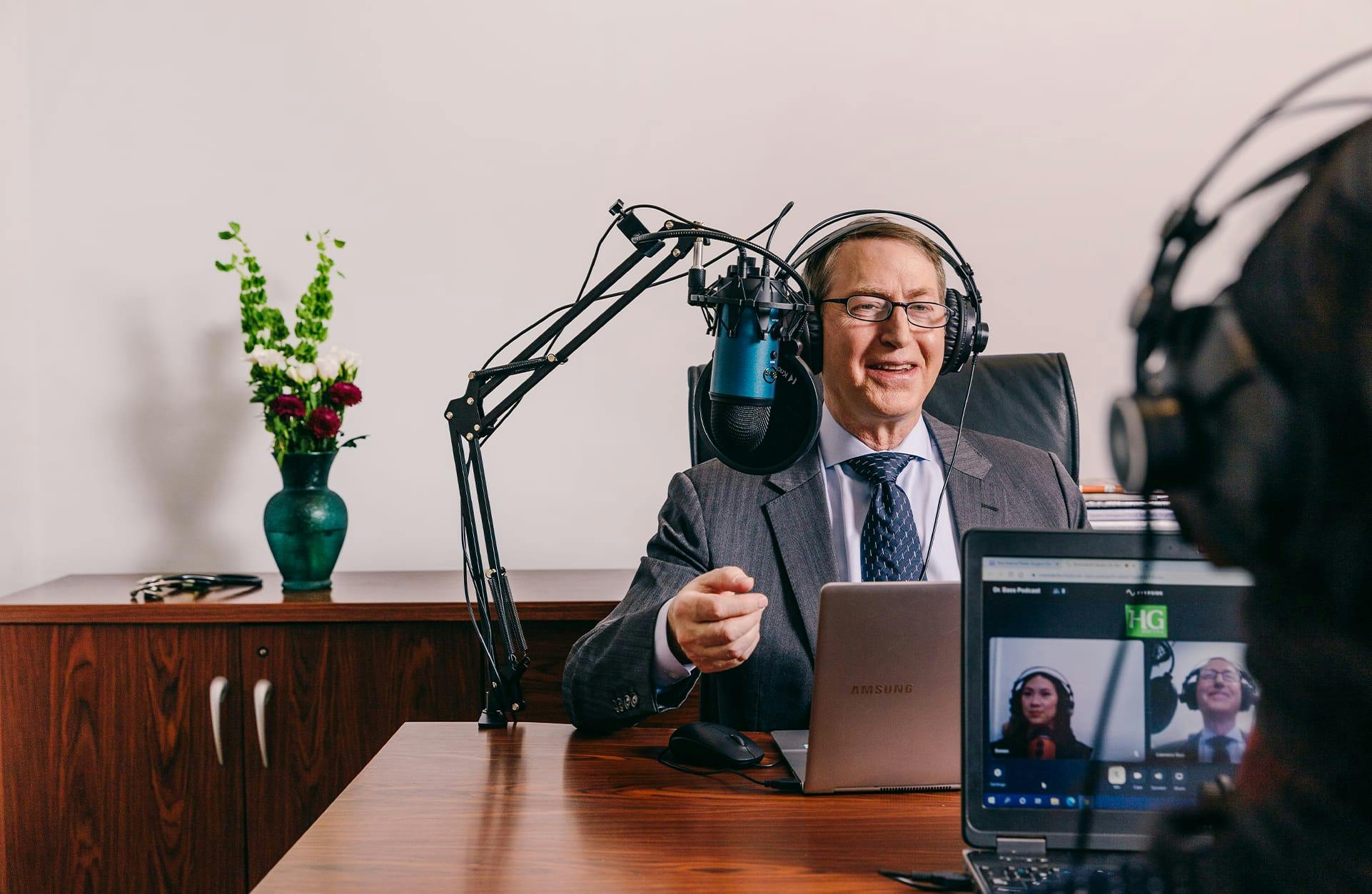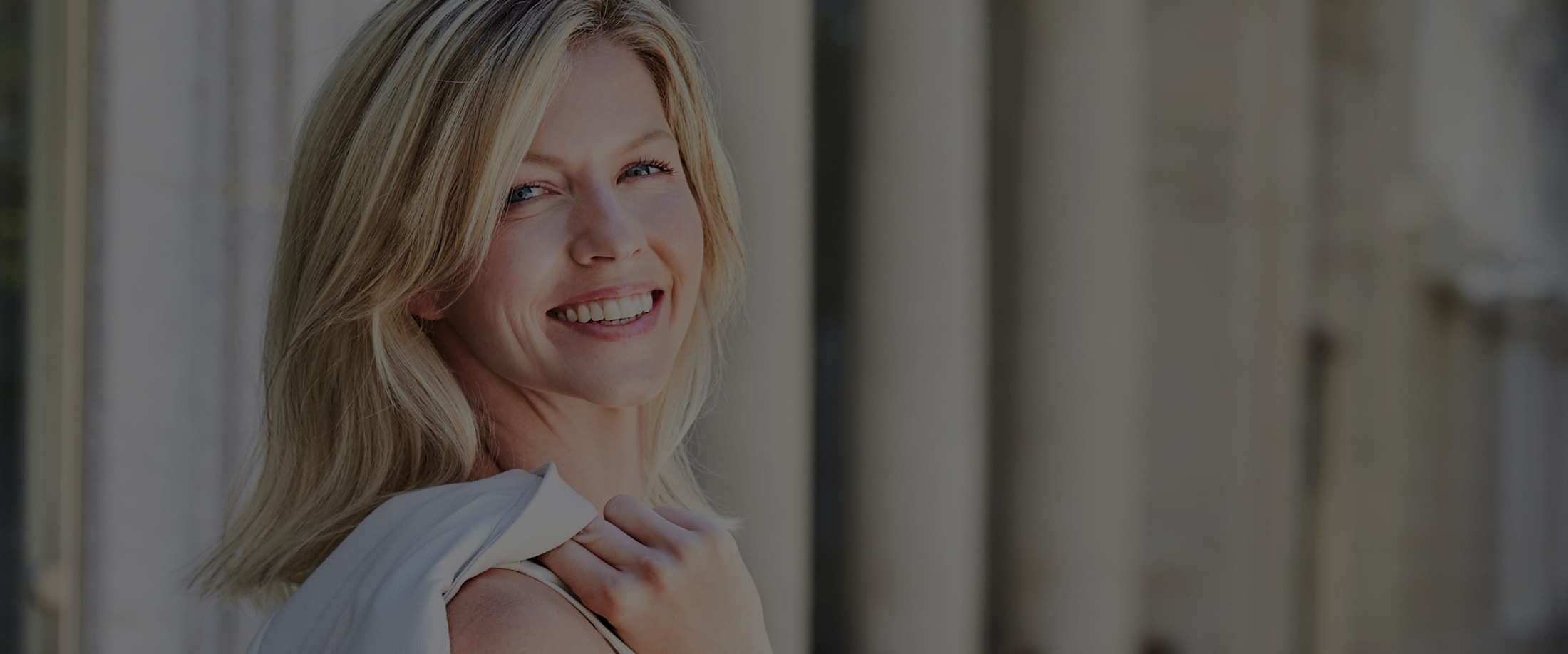When we're young, our faces have a smooth, full look thanks to well-defined fat pads and tight connective tissue. But as we age, those structures start to change, leading to sags, bags and changes in facial shape.
Facial aging doesn't happen all at once. It's a gradual process that starts as early as your 20s. At first, the face can look more sculpted and angular, but over time, fat volume loss, drooping, and eventually muscle and bone changes become more noticeable.
Restoring a youthful look often means going beyond just the skin. It takes a thoughtful approach that can include restoring lost volume, repositioning fat and connective tissue, and tightening the skin.
Drs. Bass and Edinger break down how facial aging really works, from the inside out, and why understanding these changes is key to treating them effectively.
Learn more about facelift surgery
About Dr. Kylie Edinger
Dr. Kylie Edinger is a plastic surgeon currently spending a year training as an aesthetic plastic surgery fellow with Dr. Bass and a host of other world class plastic surgeons at Manhattan Eye, Ear, and Throat Hospital in New York City. She's part of the prestigious Northwell Health program—one of the top aesthetic plastic surgery fellowships in the country. Before making her way to NYC, Dr. Edinger completed her plastic surgery residency at the University of Wisconsin.
Follow Dr. Edinger on Instagram @kylieedinger
About Dr. Lawrence Bass
Innovator. Industry veteran. In-demand Park Avenue board certified plastic surgeon, Dr. Lawrence Bass is a true master of his craft, not only in the OR but as an industry pioneer in the development and evaluation of new aesthetic technologies. With locations in both Manhattan (on Park Avenue between 62nd and 63rd Streets) and in Great Neck, Long Island, Dr. Bass has earned his reputation as the plastic surgeon for the most discerning patients in NYC and beyond.
To learn more, visit the Bass Plastic Surgery website or follow the team on Instagram @drbassnyc
Subscribe to the Park Avenue Plastic Surgery Class newsletter to be notified of new episodes & receive exclusive invitations, offers, and information from Dr. Bass.
Transcript
Summer Hardy (00:01):
Welcome to Park Avenue Plastic Surgery Class, the podcast where we explore controversies and breaking issues in plastic surgery. I'm your co-host, Summer Hardy, a clinical assistant at Bass Plastic Surgery in New York City. I'm excited to be here with Dr. Lawrence Bass Park Avenue plastic surgeon, educator and technology innovator. Today's episode is number three in our facelift series, Facial Aging. What are principals involved in facial aging and why are they important?
Dr. Lawrence Bass (00:29):
Surgery is all about anatomy and structure, so it's really important to understand normal youthful anatomy and then understand how that changes with age. That teaches us how to restore it to a youthful state. The basic structure of the faith in youth, we have skin, connective tissue, subcutaneous fat, a fibroseptal network, and then there are thicker areas within this. So we start with the skin at the surface. Underneath the skin is a layer of fat. Even in thin people, there's a little bit of fat there, and some thicker fat pads that make some of the shapes in the face. Underneath the fat is connective tissue that sits over the muscle. That's the SMAS layer or Superficial Muscular Aponeurotic System. It's a connective tissue layer over the muscle. What runs through the fat in between the skin and the connective tissue are little fibers, connective tissue fibers made of collagen that hold the skin down against the underneath. That's why our skin doesn't pool around our ankles and around our waist and around our jaw because it's held in place, particularly in youth. And there are certain areas where those connective tissue fibers are thicker or coalesce, and that creates a strong fixed attachment point, what we call a ligament, even though it's technically not a ligament like the orthopedic surgeons need, and those ligaments compartmentalize the fat layer into those discreet fat pads.
Summer Hardy (02:27):
Okay, and what happens to skin with aging?
Dr. Kylie Edinger (02:31):
Well, as we age, our skin undergoes intrinsic changes due to the natural aging process and also extrinsic exchanges due to environmental exposures and influences like sun smoking, hydration in your diet. Over time, our skin produces less collagen and elastin leading to laxity, and it also offends as we age, making it more prone to wrinkles. We see all these changes below the skin and in deeper structures of the face as well as we age.
Dr. Lawrence Bass (03:00):
So Dr. Edinger has just outlined a multitude of factors that are affecting our face that affect the aging appearance of the face. In the old days, we thought it was just the skin becoming less elastic, but now we understand that there are many other things involved, and that means we have to engage with those anatomic structures and the changes in those structures if we want to restore the face.
Summer Hardy (03:32):
That makes sense. So what are these changes in the rest of the facial structures?
Dr. Lawrence Bass (03:37):
When we start out in youth but grown up, let's say in our twenties, we have typically the baby face. Most people in their twenties still have a lot of fullness in the face, and we recognize unconsciously just when we glance at someone that that person is young. As we age, start to come out of our twenties, we start to lose fat in the face, and that means we're losing volume. Our shape is changing, flattening. We're losing some of the projection, particularly early on in the midface, but eventually everywhere. And that progresses at first to a little more sculpted look. In our thirties, we typically have a little more angular sculpted look to the face. That may be our best look. But the problem is the fat loss doesn't stop. It continues and it eventually becomes too much of a good thing. We not only lose the chubbiness of the baby face, but we start to actually sink in and hollow.
(04:47):
And if we think of people who are very much older, you see that worn, haggard and hollowed out look that the face assumes with the extremes of age. So it starts as fat loss, but when we get into our later fifties and certainly in our sixties, we're also losing muscle volume and we're losing bone mass. So the shape of our facial bones that provide the underneath scaffolding for the face are starting to thin, recede and flatten, and that gives us a loss of projection in the face and a change in the shape of the face to more of an aging change. In addition to that later progression of loss of fat means that we get an emptying or a volume loss as well as a descent of fat pads. But the important thing to understand is that each fat pad loses a different amount and descends a different amount.
(05:56):
And in addition to the fat pads changing, we get atrophy of those ligaments or connective tissue fibers. They become less elastic and we believe they lengthen or stretch out, and that contributes to sagging of the fat that was up in certain places, like against our chic bone that now sags down lower and creates sags, bags, bulges in the face that are noticeable as aging changes and not a youthful shape. So all of that changing in the fat pads means what was confluent and smooth in youth now shows as individually identifiable shapes, sags and bags, and that's amplified by the loss of skin elasticity and thickness. These young springy, elastic full skin holds everything into a smooth confluent shape. So even shapes on the face that look like single shapes like our cheek are actually made up of multiple fat pads, as well as multiple layers of fat pads and all of that. As it starts to lose elasticity, sag as skin thins will show itself, everything changes the skin, the connective tissue or SMAS layer, muscle and bone. So overall, you're getting a change between the skin and the SMAS, and you're getting a change in the amount of volume that's interposed between those two tissue layers. And these altered relationships between the layers in conjunction with the volume loss are the main culprits of an aging appearance in the face.
Summer Hardy (07:50):
Thank you for outlining all those changes, Dr. Bass. Are there any other changes to consider?
Dr. Kylie Edinger (07:56):
We also see a separation in the neck platysmal muscle that we refer to as a diastasis, where that midline muscle edge begins to separate and can lead to platysmal banding and a more obtuse angle below the neck over time.
Summer Hardy (08:10):
Okay, so I'm starting to get a handle on the aging changes on the inside. What does that translate to and what we see on the outside?
Dr. Kylie Edinger (08:18):
On the outside, patients will notice all of the things that bother patients and prob them to potentially seek out a facelift surgery. So we'll see deepening of nasolabial folds, jowling, marionette lines, platysmal banding, skin laxity, hollowing with loss of volume. So the face takes on a more rectangular shape as it ages in contrast to the softer heart shaped face of the youth as well.
Dr. Lawrence Bass (08:42):
Right? That's sort of a squaring out of the face. Normally, our cheekbone area is the widest part of the face in youth, the youthful face kind of looks like an upside down egg with the thin part on the bottom and the wider part on top. As we age and everything sags down, the mid portion narrows flattens and loses projection, and the bottom part widens out, and we come to that more rectangular appearance.
Summer Hardy (09:14):
Okay, and now time for takeaways.
Dr. Lawrence Bass (09:17):
Aging changes in the face are going on from early on in our adult face in our twenties, and some of those early changes give us a little more definition in our appearance. However, with the progression of aging, the accumulation of volume loss in the fat loosens our face and also changes our facial shape, as you just heard. Dr. Edinger describe. So we restoring a youthful face ends up being about restoring all of the tissue layers as needed, restoring fat into the face, repositioning fat in the face, repositioning connective tissue elements like the SMAS layer and repositioning skin. The thing that facelift does not address is the quality of the skin. So it gets positioned back to its youthful location, but we're not changing the quality of the skin in terms of its texture, elasticity, thickness, and that requires a separate set of treatments to broaden out the scope of the rejuvenation that's taking place.
Summer Hardy (10:38):
Thank you, Dr. Bass and Dr. Edinger for providing so much insight into facial aging and essential background for understanding how facelift approaches these changes. Watch for our next episode in the facelift series, Facelift Fears to find out why people are afraid of the facelift. Thank you for listening to the Park Avenue Plastic Surgery Class Podcast. Follow us on Apple Podcasts, write a review and share the show with your friends. Be sure to join us next time to avoid missing all the great content that is coming your way. If you want to contact us with comments or questions, we'd love to hear from you, send us an email at [email protected] or DM us on Instagram at @drbassnyc.

